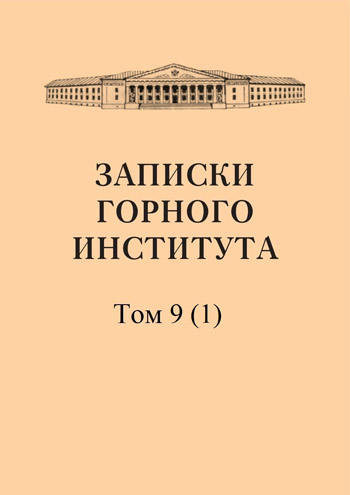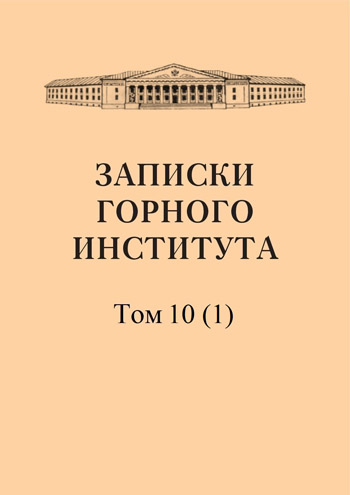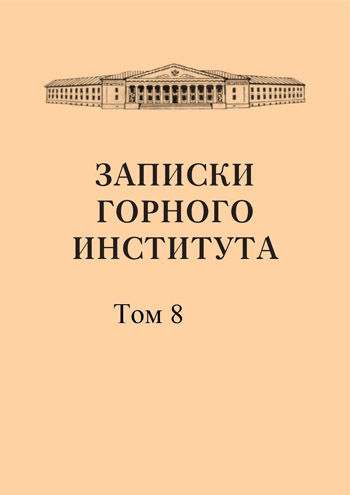-
Date submitted1934-07-04
-
Date accepted1934-09-21
-
Date published1935-01-01
Influence of pulp alkalinity on apatite flotation
- Authors:
- K. F. Beloglazov
- G. A. Osolodkov
This work was aimed at finding out the need to control the alkalinity of the pulp at the Khibinogorsk concentrator. The main attention in the work was paid to the study of the properties of minerals and flotation of apatite with different pulp alkalinity. Experiments showed that the process of dissolving apatite in the pulp is very slow and does not reach a state of equilibrium within 60 minutes (for large fraction - 20 mesh). The article provides potentiometric measurements and test results. During apatite flotation, the alkalinity of the pulp significantly affects the results of the process. High alkalinity reduces the concentrate recovery rate, and for a given flotation duration, apatite recovery is reduced. Increasing the consumption of oleic acid speeds up the process.
-
Date submitted1934-07-05
-
Date accepted1934-09-09
-
Date published1935-01-01
Application of the flotation method to separate boric acid from sodium chloride
- Authors:
- A. Shvedov
- S. A. Kuzin
The flotation enrichment method, which has made a complete revolution in the use of minerals in recent years, apparently has not yet been used to separate water-soluble salts into their component components, since there is no literature data on this issue. The application of a very rational flotation method, at least to a separate case, to simplify and shorten the long and cumbersome method of fractionated crystallization, would give impetus to the further development of research in this area, the results of which could greatly simplify the technological process for the separation of salts.
-
Date submitted1934-07-10
-
Date accepted1934-09-12
-
Date published1935-01-01
Comparison of the operation of magnetic separators on direct and alternating current
- Authors:
- A. Ya. Sochnev
The possibility of powering separators of conventional designs with alternating current has been directly confirmed experimentally. When the separator operates on alternating current, the concentrate is significantly cleaner than when the separator operates on direct current. Therefore, for a given concentrate purity, an AC separator can provide significantly greater productivity. The extraction of magnetic mineral into concentrate is the same when the separator is powered with both direct and alternating current. The required current when powering the separator with alternating current is slightly greater than the current when powering the separator with direct current. Therefore, the increase in energy losses in the separator winding when switching to alternating current power is insignificant.
-
Date submitted1934-07-07
-
Date accepted1934-09-03
-
Date published1935-01-01
Electrolytic deposition of molybdenum
- Authors:
- P. P. Porfirov
In the work on the extraction of molybdenum from ores, carried out by the Research Institute of the Leningrad Mining Institute, we had to face the issue of isolating molybdenum from leaching solutions. In view of the fact that electrolytic deposition, with greater simplicity of operations, provides a product in the form of an oxygen compound of molybdenum, free from other metals and characterized by greater purity, it is of great practical interest to study the process of cathodic deposition of molybdenum hydroxide from its solutions. In the tests described below, we experimentally studied the process of electrolytic deposition of hydroxide from solutions of ammonium molybdate. The influence of various factors, such as the concentration of molybdenum in solution, current density, temperature, concentration of salts of other metals, on the process of hydroxide deposition was studied. The results presented show that for satisfactory cathodic deposition of molybdenum hydroxide, a number of conditions must be met (see article).
-
Date submitted1934-07-02
-
Date accepted1934-09-08
-
Date published1935-01-01
Some preliminary results of the study of melted rocks
- Authors:
- A. N. Zavaritskii
- I. K. Nikitin
We studied random samples of thin sections of melted rocks, which were given to us by A.V. Vvedenskii. We did not pursue the goals of a systematic study of this random, although quite extensive (about 200 thin sections) material, and in this note we limited ourselves to only some data, characterizing the more common types of these "artificial rocks". The vast majority of the studied thin sections represent glasses that have just begun to crystallize with the formation of spherulites or various kinds of skeletal formations. Only in a few thin sections could one find individualized minerals in such a form that they were amenable to optical examination. Therefore, the main task of the study was the study of structures, and much less work was the study of minerals.
-
Date submitted1934-07-02
-
Date accepted1934-09-15
-
Date published1935-01-01
Physico-chemical research in connection with stone foundry
- Authors:
- V. V. Chernykh
- D. P. Grigor'ev
The goal of our synthetic experiments was to artificially obtain individual components of stone casting in a well-individualized form and in sufficiently large quantities. We had to synthesize, firstly, those minerals that were determined by petrographers during microscopic studies of stone castings and, secondly, those minerals whose presence in the castings can only be assumed. The latter could be present in the form of microliths and not amenable to optical determination, but could be detected during X-ray studies of stone castings. The minerals we synthesized had to be subjected to X-ray examination in order to obtain standard Debyegrams necessary for decoding the Debyegrams of stone castings. In accordance with the task, the synthesis method was also chosen, namely the method of crystallization of minerals from the corresponding melts.
-
Date submitted1934-07-11
-
Date accepted1934-09-10
-
Date published1935-01-01
X-ray examination of stone casting products
- Authors:
- V. I. Mikheev
- G. M. Popov
- N. Ya. Selyakov
This note is a report of preliminary results of x-ray examination of stone casting samples. The issue of x-ray examination of stone castings is not covered in the literature, and therefore our work represents the first attempt to use x-rays in this area. Meanwhile, with the help of x-rays, a number of problems could be solved here , such as: determination of minerals in stone casting products in the fine-crystalline phase, determination of the degree of crystallization, determination of the dispersion value of particles of the crystalline phase, etc., not to mention the transmission of castings. Our work was intended to mainly determine the minerals that arise during the crystallization of diabase smelting products at different temperatures and annealing patterns. Complexes of characteristic lines for magnetite, diopside, augite and artificial enstatite were obtained.
-
Date submitted1934-07-21
-
Date accepted1934-09-10
-
Date published1935-01-01
Debye camera
- Authors:
- V. P. Budaev
- N. Ya. Selyakov
As is known, the Debye camera serves as a device in which X-rays are taken in monochromatic rays of finely crystalline and amorphous bodies. As a result of petrographic studies of the cast rock, the following information was obtained: a) the most important mineral components are: magnetite, olivine, plagioclase and a mineral whose composition is close to Ca₃Mg₂Si₆0₁₉, b) the main structure of the cast rock (mainly cast basalt). The results of physical and chemical research consist of a) identification of artificial mineral components of cast rock: ecstatite, diopside, forsterite and acortite, their physical and chemical properties were studied under casting conditions, b) heating Endell Microscope from Leitz - reconstructed for special research work to determine high-speed and crystallizing properties of crystalline elements of cast rock. X-ray laboratory of the Fedorov Institute at the Leningrad Mining Institute.


